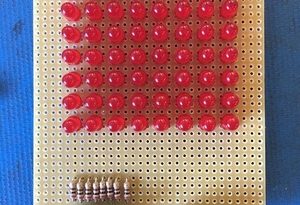Common Breadboard Specifications
Electrical engineers use solderless breadboard, which provides temporary connections between individual electronic components, to design and assemble demonstration circuits. Breadboard is convenient because you can quickly change the circuit without excessive or complicated modifications, making breadboard ideal for circuit development and testing. Because of the temporary nature of the contacts, breadboard is limited to low-voltage and -power circuits and also limits high-frequency signals.
Breadboard consists of a grid of contacts with contacts typically spaced one-tenth of an inch apart. This spacing reflects the spacing of the pins of all transistor packages and most integrated circuits, enabling you to connect all the electronic components within the current, frequency, and voltage restrictions of most breadboard.
The number of contacts on the breadboard depends on its size and the manufacturer — some breadboards have as few as seventy contacts while others can have upwards of nine hundred connections. These connection points are usually arranged in columns of ten separated by a median that provide fifty-six connections for a typical fourteen-pin integrated circuit, which is to say four connections for each of the device’s pins.
Breadboard is commonly rated for five volts at one amp or fifteen volts at one-third of an amp, both of which have a power dissipation of five watts. Since these specifications vary depending on manufacturer and the type of breadboard, you should check the data sheet before purchasing your breadboard. Due to the temporary nature of the contacts, most breadboard has a current limit of one amp or less.
Breadboard generally cannot handle frequencies greater than ten megahertz because of the nature of the contacts, which create a stray capacitance of around two to twenty picofarads (pFs) for every connection. Simply removing and reinserting a component lead on the breadboard can drastically change the contact capacitance, and these effects become a significant part of the circuit’s behavior above ten megahertz, making it impossible to analyze the circuit.
Capacitance, which is resistance to a changing current, is a result of the interaction of two conductors separated by an insulator. You cannot create a perfect connection when you insert a component lead into the breadboard, and imperfect connections create capacitance equal to a two to twenty picofarad capacitor in series with each connection.
Although the spring contacts used in most breadboard makes building temporary circuits quick and convenient, it also creates significant resistance per connection. Expect contact resistance around one-tenth of an ohm or more for each connection, which can result in unexpected circuit behavior.


